Posted in Biochemistry and molecular cell, biosynthetic, diabetic complications, glycolysis, hematopoiesis, hematopoietic stem cells, hyperglycaemia, Medium & Serums, microvascular, molecular cell biology, nonproliferating cells., Pcr Kits, Peptides, phenotypes, Recombinant Proteins, superoxide, Uncategorized, Vector & Virus, vitamins, Western Blot
Flavonoid biosynthesis. A colorful model for genetics, biochemistry, cell biology, and biotechnology.
Infusion of various hematopoietic stem cell populations and ex vivo expanded endothelial progenitor cells augments neovascularization of tissue after ischemia and contributes to reendothelialization after endothelial harm, thereby, offering a novel therapeutic possibility. However, controversy exists with respect to the identification and the origin of endothelial progenitor cells. Overall, there’s consensus that endothelial progenitor cells can derive from the bone marrow and that CD133/VEGFR2 cells symbolize a inhabitants with endothelial progenitor capability.
) Recombinant Human LEC (CCL16) |
|
Z100329 |
ABM |
1.0 mg |
EUR 3900 |
|
Description: CCL16 is a CC chemokine that specifically attracts lymphocytes, dendritic cells, and monocytes; increases their adhesive properties and has myelosuppressive activity. It is constitutively expressed in liver and is increased by interleukin 10 (IL-10) in activated monocytes. CCL16 is present in human plasma suggesting that it may be active outside hepatic tissue. CCR1, CCR2, CCR5, and CCR8 are the functional receptors of this chemokine. |
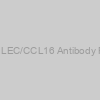 Human LEC/CCL16 Antibody Pair Set |
|
ABPR-ZB293 |
Creative Diagnostics |
5 plates, 15 plates |
Ask for price |
|
Description: Quantitative determination of Human LEC/CCL16 |
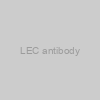 LEC antibody |
|
10R-L115A |
Fitzgerald |
500 ug |
EUR 240 |
|
Description: Mouse monoclonal LEC antibody |
 LEC antibody |
|
70R-LG003 |
Fitzgerald |
50 ug |
EUR 312 |
|
Description: Affinity purified Goat polyclonal LEC antibody |
 Protein) Recombinant Human LEC (CCL16) Protein |
|
PROTO15467-1 |
BosterBio |
20ug |
EUR 380.4 |
|
Description: LEC is a CC chemokine that can signal through the CCR8 and CCR1 receptors. It is expressed in the liver, spleen, and thymus. LEC is chemotactic towards monocytes and lymphocytes but not neutrophils. Recombinant human LEC is an 11.2 kDa protein containing 97 amino acid residues, including the four conserved cysteine residues present in CC chemokines. |
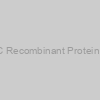 Human LEC Recombinant Protein Lyophilized |
|
IHULECRLY5UG |
Innovative research |
each |
EUR 341 |
|
Description: Human LEC Recombinant Protein Lyophilized |
) Recombinant Human LEC/NCC-4 (CCL16) |
|
7-01792 |
CHI Scientific |
5µg |
Ask for price |
) Recombinant Human LEC/NCC-4 (CCL16) |
|
7-01793 |
CHI Scientific |
20µg |
Ask for price |
) Recombinant Human LEC/NCC-4 (CCL16) |
|
7-01794 |
CHI Scientific |
1mg |
Ask for price |
) Recombinant Human LEC/NCC-4 (CCL16) |
|
HECCP-1601 |
Cyagen |
5ug |
Ask for price |
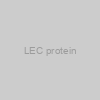 LEC protein |
|
30R-AL013 |
Fitzgerald |
20 ug |
EUR 312 |
|
Description: Purified recombinant Human LEC protein |
 Antibody) LEC Chemokine(LEC66) Antibody |
|
BNC940066-100 |
Biotium |
100uL |
EUR 238.8 |
|
Description: Primary antibody against LEC Chemokine(LEC66), CF594 conjugate, Concentration: 0.1mg/mL |
 Antibody) LEC Chemokine(LEC66) Antibody |
|
BNC940066-500 |
Biotium |
500uL |
EUR 652.8 |
|
Description: Primary antibody against LEC Chemokine(LEC66), CF594 conjugate, Concentration: 0.1mg/mL |
 Antibody) LEC Chemokine(LEC67) Antibody |
|
BNC940067-100 |
Biotium |
100uL |
EUR 238.8 |
|
Description: Primary antibody against LEC Chemokine(LEC67), CF594 conjugate, Concentration: 0.1mg/mL |
 Antibody) LEC Chemokine(LEC67) Antibody |
|
BNC940067-500 |
Biotium |
500uL |
EUR 652.8 |
|
Description: Primary antibody against LEC Chemokine(LEC67), CF594 conjugate, Concentration: 0.1mg/mL |
 Antibody) LEC Chemokine(LEC66) Antibody |
|
BNCH0066-100 |
Biotium |
100uL |
EUR 238.8 |
|
Description: Primary antibody against LEC Chemokine(LEC66), Horseradish Peroxidase conjugate, Concentration: 0.1mg/mL |
 Antibody) LEC Chemokine(LEC66) Antibody |
|
BNCH0066-500 |
Biotium |
500uL |
EUR 652.8 |
|
Description: Primary antibody against LEC Chemokine(LEC66), Horseradish Peroxidase conjugate, Concentration: 0.1mg/mL |
 Antibody) LEC Chemokine(LEC67) Antibody |
|
BNCH0067-100 |
Biotium |
100uL |
EUR 238.8 |
|
Description: Primary antibody against LEC Chemokine(LEC67), Horseradish Peroxidase conjugate, Concentration: 0.1mg/mL |
 Antibody) LEC Chemokine(LEC67) Antibody |
|
BNCH0067-500 |
Biotium |
500uL |
EUR 652.8 |
|
Description: Primary antibody against LEC Chemokine(LEC67), Horseradish Peroxidase conjugate, Concentration: 0.1mg/mL |
 Antibody) LEC Chemokine(LEC66) Antibody |
|
BNUM0066-50 |
Biotium |
50uL |
EUR 474 |
|
Description: Primary antibody against LEC Chemokine(LEC66), 1mg/mL |
 Antibody) LEC Chemokine(LEC67) Antibody |
|
BNUM0067-50 |
Biotium |
50uL |
EUR 474 |
|
Description: Primary antibody against LEC Chemokine(LEC67), 1mg/mL |
 Antibody) LEC Chemokine(LEC66) Antibody |
|
BNC700066-100 |
Biotium |
100uL |
EUR 238.8 |
|
Description: Primary antibody against LEC Chemokine(LEC66), CF770 conjugate, Concentration: 0.1mg/mL |
 Antibody) LEC Chemokine(LEC66) Antibody |
|
BNC700066-500 |
Biotium |
500uL |
EUR 652.8 |
|
Description: Primary antibody against LEC Chemokine(LEC66), CF770 conjugate, Concentration: 0.1mg/mL |
 Antibody) LEC Chemokine(LEC67) Antibody |
|
BNC700067-100 |
Biotium |
100uL |
EUR 238.8 |
|
Description: Primary antibody against LEC Chemokine(LEC67), CF770 conjugate, Concentration: 0.1mg/mL |
 Antibody) LEC Chemokine(LEC67) Antibody |
|
BNC700067-500 |
Biotium |
500uL |
EUR 652.8 |
|
Description: Primary antibody against LEC Chemokine(LEC67), CF770 conjugate, Concentration: 0.1mg/mL |
 Antibody) LEC Chemokine(LEC66) Antibody |
|
BNC800066-100 |
Biotium |
100uL |
EUR 238.8 |
|
Description: Primary antibody against LEC Chemokine(LEC66), CF680 conjugate, Concentration: 0.1mg/mL |
 Antibody) LEC Chemokine(LEC66) Antibody |
|
BNC800066-500 |
Biotium |
500uL |
EUR 652.8 |
|
Description: Primary antibody against LEC Chemokine(LEC66), CF680 conjugate, Concentration: 0.1mg/mL |
 Antibody) LEC Chemokine(LEC67) Antibody |
|
BNC800067-100 |
Biotium |
100uL |
EUR 238.8 |
|
Description: Primary antibody against LEC Chemokine(LEC67), CF680 conjugate, Concentration: 0.1mg/mL |
 Antibody) LEC Chemokine(LEC67) Antibody |
|
BNC800067-500 |
Biotium |
500uL |
EUR 652.8 |
|
Description: Primary antibody against LEC Chemokine(LEC67), CF680 conjugate, Concentration: 0.1mg/mL |
 Antibody) LEC Chemokine(LEC66) Antibody |
|
BNC810066-100 |
Biotium |
100uL |
EUR 238.8 |
|
Description: Primary antibody against LEC Chemokine(LEC66), CF680R conjugate, Concentration: 0.1mg/mL |
 Antibody) LEC Chemokine(LEC66) Antibody |
|
BNC810066-500 |
Biotium |
500uL |
EUR 652.8 |
|
Description: Primary antibody against LEC Chemokine(LEC66), CF680R conjugate, Concentration: 0.1mg/mL |
 Antibody) LEC Chemokine(LEC67) Antibody |
|
BNC810067-100 |
Biotium |
100uL |
EUR 238.8 |
|
Description: Primary antibody against LEC Chemokine(LEC67), CF680R conjugate, Concentration: 0.1mg/mL |
 Antibody) LEC Chemokine(LEC67) Antibody |
|
BNC810067-500 |
Biotium |
500uL |
EUR 652.8 |
|
Description: Primary antibody against LEC Chemokine(LEC67), CF680R conjugate, Concentration: 0.1mg/mL |
 Antibody) LEC Chemokine(LEC66) Antibody |
|
BNC880066-100 |
Biotium |
100uL |
EUR 238.8 |
|
Description: Primary antibody against LEC Chemokine(LEC66), CF488A conjugate, Concentration: 0.1mg/mL |
 Antibody) LEC Chemokine(LEC66) Antibody |
|
BNC880066-500 |
Biotium |
500uL |
EUR 652.8 |
|
Description: Primary antibody against LEC Chemokine(LEC66), CF488A conjugate, Concentration: 0.1mg/mL |
 Antibody) LEC Chemokine(LEC67) Antibody |
|
BNC880067-100 |
Biotium |
100uL |
EUR 238.8 |
|
Description: Primary antibody against LEC Chemokine(LEC67), CF488A conjugate, Concentration: 0.1mg/mL |
 Antibody) LEC Chemokine(LEC67) Antibody |
|
BNC880067-500 |
Biotium |
500uL |
EUR 652.8 |
|
Description: Primary antibody against LEC Chemokine(LEC67), CF488A conjugate, Concentration: 0.1mg/mL |
 Antibody) LEC Chemokine(LEC66) Antibody |
|
BNC550066-100 |
Biotium |
100uL |
EUR 238.8 |
|
Description: Primary antibody against LEC Chemokine(LEC66), CF555 conjugate, Concentration: 0.1mg/mL |
 Antibody) LEC Chemokine(LEC66) Antibody |
|
BNC550066-500 |
Biotium |
500uL |
EUR 652.8 |
|
Description: Primary antibody against LEC Chemokine(LEC66), CF555 conjugate, Concentration: 0.1mg/mL |
 Antibody) LEC Chemokine(LEC67) Antibody |
|
BNC550067-100 |
Biotium |
100uL |
EUR 238.8 |
|
Description: Primary antibody against LEC Chemokine(LEC67), CF555 conjugate, Concentration: 0.1mg/mL |
 Antibody) LEC Chemokine(LEC67) Antibody |
|
BNC550067-500 |
Biotium |
500uL |
EUR 652.8 |
|
Description: Primary antibody against LEC Chemokine(LEC67), CF555 conjugate, Concentration: 0.1mg/mL |
 Antibody) LEC Chemokine(LEC66) Antibody |
|
BNC610066-100 |
Biotium |
100uL |
EUR 238.8 |
|
Description: Primary antibody against LEC Chemokine(LEC66), CF660R conjugate, Concentration: 0.1mg/mL |
 Antibody) LEC Chemokine(LEC66) Antibody |
|
BNC610066-500 |
Biotium |
500uL |
EUR 652.8 |
|
Description: Primary antibody against LEC Chemokine(LEC66), CF660R conjugate, Concentration: 0.1mg/mL |
 Antibody) LEC Chemokine(LEC67) Antibody |
|
BNC610067-100 |
Biotium |
100uL |
EUR 238.8 |
|
Description: Primary antibody against LEC Chemokine(LEC67), CF660R conjugate, Concentration: 0.1mg/mL |
 Antibody) LEC Chemokine(LEC67) Antibody |
|
BNC610067-500 |
Biotium |
500uL |
EUR 652.8 |
|
Description: Primary antibody against LEC Chemokine(LEC67), CF660R conjugate, Concentration: 0.1mg/mL |
 Antibody) LEC Chemokine(LEC66) Antibody |
|
BNC430066-100 |
Biotium |
100uL |
EUR 238.8 |
|
Description: Primary antibody against LEC Chemokine(LEC66), CF543 conjugate, Concentration: 0.1mg/mL |
 Antibody) LEC Chemokine(LEC66) Antibody |
|
BNC430066-500 |
Biotium |
500uL |
EUR 652.8 |
|
Description: Primary antibody against LEC Chemokine(LEC66), CF543 conjugate, Concentration: 0.1mg/mL |
 Antibody) LEC Chemokine(LEC67) Antibody |
|
BNC430067-100 |
Biotium |
100uL |
EUR 238.8 |
|
Description: Primary antibody against LEC Chemokine(LEC67), CF543 conjugate, Concentration: 0.1mg/mL |
 Antibody) LEC Chemokine(LEC67) Antibody |
|
BNC430067-500 |
Biotium |
500uL |
EUR 652.8 |
|
Description: Primary antibody against LEC Chemokine(LEC67), CF543 conjugate, Concentration: 0.1mg/mL |
 Antibody) LEC Chemokine(LEC66) Antibody |
|
BNC470066-100 |
Biotium |
100uL |
EUR 238.8 |
|
Description: Primary antibody against LEC Chemokine(LEC66), CF647 conjugate, Concentration: 0.1mg/mL |
 Antibody) LEC Chemokine(LEC66) Antibody |
|
BNC470066-500 |
Biotium |
500uL |
EUR 652.8 |
|
Description: Primary antibody against LEC Chemokine(LEC66), CF647 conjugate, Concentration: 0.1mg/mL |
 Antibody) LEC Chemokine(LEC67) Antibody |
|
BNC470067-100 |
Biotium |
100uL |
EUR 238.8 |
|
Description: Primary antibody against LEC Chemokine(LEC67), CF647 conjugate, Concentration: 0.1mg/mL |
 Antibody) LEC Chemokine(LEC67) Antibody |
|
BNC470067-500 |
Biotium |
500uL |
EUR 652.8 |
|
Description: Primary antibody against LEC Chemokine(LEC67), CF647 conjugate, Concentration: 0.1mg/mL |
 Antibody) LEC Chemokine(LEC66) Antibody |
|
BNC680066-100 |
Biotium |
100uL |
EUR 238.8 |
|
Description: Primary antibody against LEC Chemokine(LEC66), CF568 conjugate, Concentration: 0.1mg/mL |
 Antibody) LEC Chemokine(LEC66) Antibody |
|
BNC680066-500 |
Biotium |
500uL |
EUR 652.8 |
|
Description: Primary antibody against LEC Chemokine(LEC66), CF568 conjugate, Concentration: 0.1mg/mL |
However, rising proof means that there are further bone marrow-derived cell populations (eg, myeloid cells, “facet inhabitants” cells, and mesenchymal cells) and non-bone marrow-derived cells, which additionally can provide rise to endothelial cells.

The characterization of the totally different progenitor cell populations and their practical properties are mentioned. Mobilization and endothelial progenitor cell-mediated neovascularization is critically regulated. Stimulatory (eg, statins and train) or inhibitory components (danger components for coronary artery illness) modulate progenitor cell ranges and, thereby, have an effect on the vascular restore capability.
Moreover, recruitment and incorporation of endothelial progenitor cells requires a coordinated sequence of multistep adhesive and signaling occasions together with adhesion and migration (eg, by integrins), chemoattraction (eg, by SDF-1/CXCR4), and lastly the differentiation to endothelial cells. This evaluate summarizes the mechanisms regulating endothelial progenitor cell-mediated neovascularization and reendothelialization.
Bone marrow stromal stem cells: nature, biology, and potential functions.
- Bone marrow stromal cells are progenitors of skeletal tissue parts reminiscent of bone, cartilage, the hematopoiesis-supporting stroma, and adipocytes. In addition, they might be experimentally induced to endure unorthodox differentiation, probably forming neural and myogenic cells. As such, they symbolize an necessary paradigm of post-natal nonhematopoietic.
- stem cells, and a straightforward supply for potential therapeutic use. Along with an outline of the fundamentals of their biology, we talk about right here their potential nature as parts of the vascular wall, and the prospects for their use in native and systemic transplantation and gene remedy.
- Fluorescent probes are one of many cornerstones of real-time imaging of dwell cells and a robust instrument for cell biologists. They present excessive sensitivity and nice versatility whereas minimally perturbing the cell underneath investigation.
- Genetically-encoded reporter constructs which can be derived from fluorescent proteins are main a revolution within the real-time visualization and monitoring of varied mobile occasions. Recent advances embody the continued improvement of ‘passive’ markers for the measurement of biomolecule expression and localization in dwell cells, and ‘lively’ indicators for monitoring extra complicated mobile processes reminiscent of small-molecule-messenger dynamics, enzyme activation and protein-protein interactions.
- The mobile processes that govern neuronal operate are extremely complicated, with many fundamental cell organic pathways uniquely tailored to carry out the flowery info processing achieved by the mind. This is especially evident within the trafficking and regulation of membrane proteins to and from synapses, which is usually a lengthy distance away from the cell physique and quantity within the hundreds.
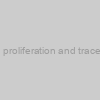 CFDA SE cell proliferation and tracer detection kit |
|
ETF0051 |
EnoGene |
2000 assays |
EUR 300 |
 JAK2 JH2 Tracer |
|
T19017-10mg |
TargetMol Chemicals |
10mg |
Ask for price |
|
Description: JAK2 JH2 Tracer |
 JAK2 JH2 Tracer |
|
T19017-50mg |
TargetMol Chemicals |
50mg |
Ask for price |
|
Description: JAK2 JH2 Tracer |
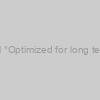 CytoFixâ„¢ BCECF, AM *Optimized for long term cellular pH tracking* |
|
21200-1mg |
AAT Bioquest |
1 mg |
EUR 318 |
|
Description: Intracellular pH plays an important modulating role in many cellular events, including cell growth, calcium regulation, enzymatic activity, receptor-mediated signal transduction, ion transport, endocytosis, chemotaxis, cell adhesion and other cellular processes. |
 ROS tracer precursor |
|
T19550-10mg |
TargetMol Chemicals |
10mg |
Ask for price |
|
Description: ROS tracer precursor |
 ROS tracer precursor |
|
T19550-1g |
TargetMol Chemicals |
1g |
Ask for price |
|
Description: ROS tracer precursor |
 ROS tracer precursor |
|
T19550-1mg |
TargetMol Chemicals |
1mg |
Ask for price |
|
Description: ROS tracer precursor |
 ROS tracer precursor |
|
T19550-50mg |
TargetMol Chemicals |
50mg |
Ask for price |
|
Description: ROS tracer precursor |
 ROS tracer precursor |
|
T19550-5mg |
TargetMol Chemicals |
5mg |
Ask for price |
|
Description: ROS tracer precursor |
) Long-Term Cell Tracing Reagent CMAC (Blue) |
|
EGY0171 |
EnoGene |
100µg |
EUR 92 |
) Long-Term Cell Tracing Reagent CMAC (Blue) |
|
EGY0172 |
EnoGene |
5x100µg |
EUR 340 |
) Long-Term Cell Tracing Reagent CMFDA(Green) |
|
EGY0181 |
EnoGene |
100µg |
EUR 220 |
) Long-Term Cell Tracing Reagent CMFDA(Green) |
|
EGY0182 |
EnoGene |
5x100µg |
EUR 500 |
) Long-Term Cell Tracing Reagent CDCFDA, SE (Green) |
|
EGY0161 |
EnoGene |
100 µg |
EUR 160 |
) Long-Term Cell Tracing Reagent CDCFDA, SE (Green) |
|
EGY0162 |
EnoGene |
5 x 100 µg |
EUR 340 |
, Colorimetric) CytoSelect™ Cell Transformation Assay (Cell Recovery Compatible), Colorimetric |
|
CBA-135 |
Cell Biolabs |
96 assays |
EUR 715 |
, Colorimetric) CytoSelect™ Cell Transformation Assay (Cell Recovery Compatible), Colorimetric |
|
CBA-135-5 |
Cell Biolabs |
5 x 96 assays |
EUR 3095 |
, Fluorometric) CytoSelect™ Cell Transformation Assay (Cell Recovery Compatible), Fluorometric |
|
CBA-140 |
Cell Biolabs |
96 assays |
EUR 750 |
, Fluorometric) CytoSelect™ Cell Transformation Assay (Cell Recovery Compatible), Fluorometric |
|
CBA-140-5 |
Cell Biolabs |
5 x 96 assays |
EUR 3215 |
, Colorimetric, Trial Size) CytoSelect Cell Transformation Assay (Cell Recovery Compatible), Colorimetric, Trial Size |
|
CBA-135-T |
Cell Biolabs |
24 assays |
EUR 518.4 |
|
Description: CytoSelect 96-Well Cell Transformation Assays (Cell Recovery Compatible) provide a robust system for detecting transformed cells, screening cell transformation inhibitors, and determining in vitro drug sensitivity. A proprietary modified soft agar matrix allows you to either quantify cells using the included fluorescent dye, or recover the cells for further analysis. |
, Trial Size) CytoSelect 96-Well Cell Transformation Assay (Cell Recovery Compatible, Fluorometric), Trial Size |
|
CBA-140-T |
Cell Biolabs |
24 assays |
EUR 547.2 |
|
Description: CytoSelect 96-Well Cell Transformation Assays (Cell Recovery Compatible) provide a robust system for detecting transformed cells, screening cell transformation inhibitors, and determining in vitro drug sensitivity. A proprietary modified soft agar matrix allows you to either quantify cells using the included fluorescent dye, or recover the cells for further analysis. |
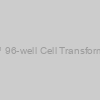 CytoSelect™ 96-well Cell Transformation Assay |
|
CBA-130 |
Cell Biolabs |
96 assays |
EUR 640 |
 CytoSelect™ 96-well Cell Transformation Assay |
|
CBA-130-5 |
Cell Biolabs |
5 x 96 assays |
EUR 2695 |
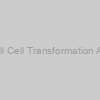 CytoSelect 384-well Cell Transformation Assay, Fluorometric |
|
CBA-145 |
Cell Biolabs |
384 assays |
EUR 1208.4 |
|
Description: Our CytoSelect 384-Well Cell Transformation Assay uses a modified soft agar 3D matrix to support the formation of colonies by neoplastic cells. Quantitation of cell transformation is performed on a fluorescence plate reader. |
 CytoSelect 384-well Cell Transformation Assay, Fluorometric |
|
CBA-145-5 |
Cell Biolabs |
5 x 384 assays |
EUR 4681.2 |
|
Description: Our CytoSelect 384-Well Cell Transformation Assay uses a modified soft agar 3D matrix to support the formation of colonies by neoplastic cells. Quantitation of cell transformation is performed on a fluorescence plate reader. |
) StemTAG Stem Cell Colony Formation Assay (Cell Recovery Compatible) |
|
CBA-325 |
Cell Biolabs |
96 assays |
EUR 1027.2 |
|
Description: Our StemTAG 96-Well Stem Cell Colony Formation Assay provides a high-throughput method to quantify ES cells in just 7-10 days, and no manual cell counting is required. Once colonies are formed, they may be analyzed in three different ways: 1. Lyse cells, then quantify in a fluorescence plate reader using dye included in the kit; 2. Lyse cells, then quantify alkaline phosphatase activity using reagents provided; or 3. Recover colonies from matrix for further culture or analysis. |
) StemTAG Stem Cell Colony Formation Assay (Cell Recovery Compatible) |
|
CBA-325-5 |
Cell Biolabs |
5 x 96 assays |
EUR 4033.2 |
|
Description: Our StemTAG 96-Well Stem Cell Colony Formation Assay provides a high-throughput method to quantify ES cells in just 7-10 days, and no manual cell counting is required. Once colonies are formed, they may be analyzed in three different ways: 1. Lyse cells, then quantify in a fluorescence plate reader using dye included in the kit; 2. Lyse cells, then quantify alkaline phosphatase activity using reagents provided; or 3. Recover colonies from matrix for further culture or analysis. |
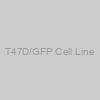 T47D/GFP Cell Line |
|
AKR-208 |
Cell Biolabs |
1 vial |
EUR 686.4 |
|
Description: T47D/GFP Cell Line stably expresses GFP and otherwise exhibits the same characteristics of the parental cell line. |
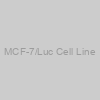 MCF-7/Luc Cell Line |
|
AKR-234 |
Cell Biolabs |
1 vial |
EUR 686.4 |
|
Description: MCF-7/Luc Cell Line stably expresses luciferase and otherwise exhibits the same characteristics of the parental cell line. |
 SKOV-3/Luc Cell Line |
|
AKR-232 |
Cell Biolabs |
1 vial |
EUR 686.4 |
|
Description: SKOV-3/Luc Cell Line stably expresses luciferase and otherwise exhibits the same characteristics of the parental cell line. |
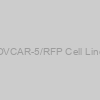 OVCAR-5/RFP Cell Line |
|
AKR-254 |
Cell Biolabs |
1 vial |
EUR 686.4 |
|
Description: OVCAR-5/RFP Cell Line stably expresses RFP and otherwise exhibits the same characteristics of the parental cell line. |
- The regulation of neurotransmitter receptors, such because the AMPA-type glutamate receptors (AMPARs), the most important excitatory neurotransmitter receptors within the mind, is an important mechanism for the modulation of synaptic transmission. The ranges of AMPARs at synapses are very dynamic, and it’s these plastic modifications in synaptic operate which can be thought to underlie info storage within the mind.
- Thus, understanding the mobile equipment that controls AMPAR trafficking can be crucial for understanding the mobile foundation of habits in addition to many neurological ailments. Here we describe the life cycle of AMPARs, from their biogenesis, by way of their journey to the synapse, and in the end by way of their demise, and talk about how the modulation of this course of is crucial for mind operate.
- Adult skeletal muscle has a outstanding capability to regenerate following myotrauma. Because grownup myofibers are terminally differentiated, the regeneration of skeletal muscle is basically depending on a small inhabitants of resident cells termed satellite tv for pc cells. Although this inhabitants of cells was recognized 40 years in the past, little is thought concerning the molecular phenotype or regulation of the satellite tv for pc cell.
- The use of cell tradition strategies and transgenic animal fashions has improved our understanding of this distinctive cell inhabitants; nonetheless, the capability and potential of those cells stay ill-defined. This evaluate will spotlight the origin and distinctive markers of the satellite tv for pc cell inhabitants, the regulation by development components, and the response to physiological and pathological stimuli. We conclude by highlighting the potential therapeutic makes use of of satellite tv for pc cells and figuring out future analysis objectives for the research of satellite tv for pc cell biology.



